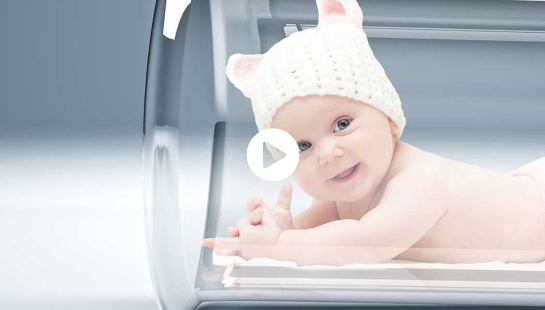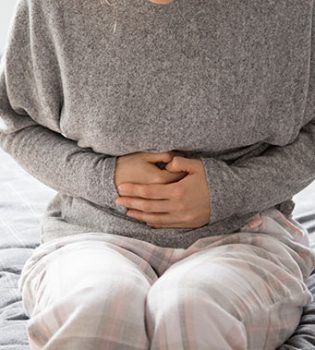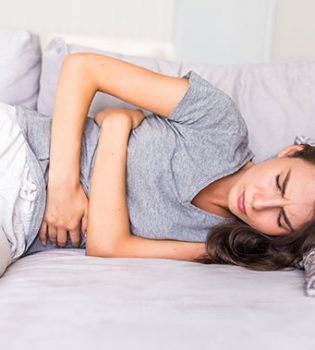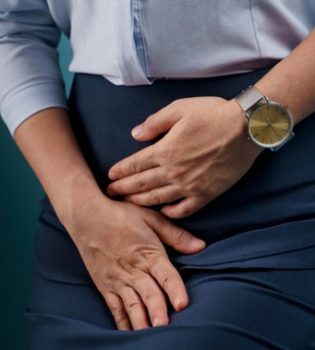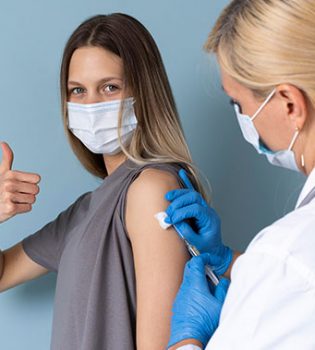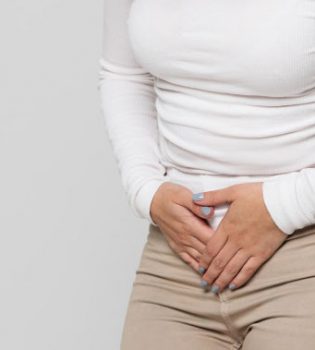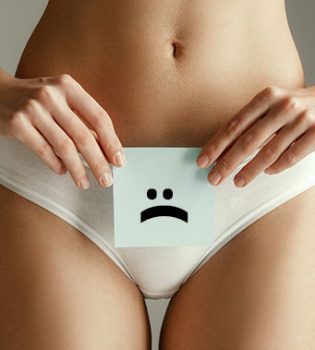Group A methods: 1-Natural family planning. 2-Breastfeeding. 3-Barrier methods: condom, diaphragm, spermicide. 4-Oral contraceptives: POPs, mini-pills, morning-after pill.
Group B methods: 1-Subcutaneous implants. 2-Injected contra. 3-IUD.
Group C methods: Voluntary surgical sterilization.
Subcutaneous implants: It consists of 6 silicone subcutaneous capsules, 3.4 cm long, 2.4 mm in diameter, and containing levonorgestrel, a synthetic progesterone in crystalline form, on average 36 mg. It is placed on the inside of the upper arm, just under the skin, using local anesthetic.
Mechanism of action of subcutaneous implants: suppression of ovulation, decreased tubal motility, thinning of the endometrium, thickening of cervical mucus.
Positive aspects: It is highly cultivated (average pregnancy rate less than 1% per year over a five-year period), immediately effective, easy to use, provides protection for 5 years. It is useful; It is not an obstacle for daily activities, sexual desire and intercourse. It is reversible, comfortable, has few side effects, does not affect breastfeeding.
Side effects: inserted and removed by a minor surgical procedure that requires trained personnel, carries risks common to every minor surgical procedure (infection, bleeding, hematoma), discernible under the skin, may cause menstrual cycle changes (bleeding between periods, spotting, prolonged bleeding, amenorrhea), Rarely, it can cause effects such as headache, weight change, depression. Who should not use it: pregnant women, those with undetermined vaginal bleeding, breast cancer or suspected, active thromboembolic disease, jaundice, active liver disease, those using epilepsy and tuberculosis drugs, depression, hypertension and smoking. Injectable contraceptives: DMPA and NET-EN are two types of drugs.
Positive aspects: highly effective (failure rate less than 0.1 per 100 woman-years), easy to apply, next injection can be shifted from normal time to 3 weeks for DMPA, 2 weeks for NET-EN, does not affect breastfeeding, it has a protective effect against pelvic infection and ovarian cancer, prevents ectopic pregnancies and iron deficiency anemia.
Side effects: It may cause menstrual irregularity, return to fertility may take 5-7 months when the method is given up, may cause weight gain and headache, breast tenderness, it is necessary to go to the clinic to have injections administered.
Who should not use: pregnant women, those with undetermined vaginal bleeding, breast cancer or suspected, active thromboembolic disease, jaundice, active liver disease, those using epilepsy and tuberculosis drugs, depression, hypertension and smoking.

IUD: 1-Copper IUDs: TCu 380A (most common). 2-Progestin-releasing IUDs: progestasert. 3-Inert IUDs: made of lippes loop (plastic), stainless steel (Chinese ring).
Mechanism of action: It prevents the sperm from reaching the upper genital tract, thickens the cervical mucus, changes the endometrial layer, and prevents the transport of the ovum.
Positive aspects: Its effectiveness is high, it provides long-term protection, fertility returns immediately when it is removed, does not affect breastfeeding, does not prevent sexual intercourse, control once a year is sufficient as long as there is no problem, it is safe, useful, it is sufficient to check the threads once a month.
Side effects: It can be painful to apply and remove, some women may experience lower abdominal discomfort, heavy menstrual bleeding, spotting and cramping between periods. These complaints decrease from the 3rd menstrual period; rarely, uterine perforation may develop during application (<1/1000 cases), the device may slip from the uterus to the cervix and may be thrown into the vagina, PID risk in IUD users with a history of sexually transmitted disease and having sexual intercourse with more than one person increases, so it can cause infertility. Who should not use it: pregnant women, those with untreated and untreated vaginal bleeding, abnormal cervical smear or other signs of genital cancer, recent, active or recurrent PID, active genital infections (vaginitis, cervicitis), ectopic pregnancy history, deep anemia . Combined oral contraceptives: boxes of 28 pills (no break), boxes of 22 pills (6 days break), boxes of 21 pills (7 days break). Mechanism of action: suppression of ovulation, slowing of ovum transport in the fallopian tubes, inhibition of implantation, thickening of cervical mucus.
Positive aspects: it is extremely effective (first year failure rate 1-3 per 100 woman years), easy to use; menstrual bleeding becomes less in quantity, shorter and regular. It reduces iron deficiency anemia, menstrual cramps, premenstrual tension, cyst formation in the ovaries, is good for acne, reduces the formation of endometrial and ovarian cancer, is protective against some PID causes, reduces benign breast diseases (such as cysts and fibroadenoma), prevents ectopic pregnancy, reduces the risk of osteoporosis.
Side effects: It is necessary to remember to take the pill every day. Especially in the first 3 months of use; nausea-vomiting, headache, breakthrough bleeding-spotting, amenorrhea, weight gain, tightness in the breasts. In some women, it can cause mood changes such as depression and decreased sexual desire. There are drug interactions with barbiturates, phenytoin, phenylbutazone, rifampicin, and some other antibiotics. It can cause deep vein thrombosis, stroke, heart attack in people with hypertension, over 35 years of age, and those who smoke more than 20 cigarettes a day. It can raise blood pressure, increase the risk of chlamydial infection.
Warnings for COC use: A-Those who have been diagnosed with breast cancer in the past or present or who are suspected of having breast cancer; Most studies show that OCs do not cause but prevent breast cancer. COCs may accelerate the course of pre-existing breast cancer rather than increase the incidence of breast cancer. B-Those with suspected thromboembolic or other vascular disease in the past or present; Estrogen can increase blood coagulation. Women with other risk factors for excessive coagulation, especially those over 35 years of age and smokers, are at risk for future coagulation problems when they use COCs.

Who should not use: Pregnants, nursing mothers (if the baby is less than 6 months old), those with jaundice, active liver disease, a history of ischemic heart disease or stroke, those with coagulation problems (DVT, pulmonary embolism), those who are ≥35 years old and smokers, those who are over 40 years of age and DM, those with headache (migraine), those with high blood pressure (>180/110 mmHg), those with breast cancer, those who will undergo major surgery after long bed rest, those who take anti-epileptic (phenytoin, barbiturate) and tuberculosis (rifampin) drugs. In case of forgetting a pill: When 1 pill is forgotten; It should be taken immediately when remembered and the pill of that day should be taken on time. When 2 pills are forgotten; Two pills are taken two days in a row, an additional method is used for a week. If 2 or more menstrual periods are missed, a visit to a clinic is required for a pregnancy test.
Minipills: They are progestin-only OCs. All pills contain the same amount of progestin. When one box is finished, the next box is started immediately. Its effectiveness is high. The first-year failure rate is 3-6 per 100 female years.
Mechanism of action: suppression of ovulation, thickening of cervical mucus, inhibition of implantation, slowing of ovum transport in the fallopian tubes.
Positive aspects: there is no data showing that it increases the risk of cancer or CVD, does not change the quality of breast milk, has a lower risk of raising blood pressure, causing headache and depression, does not increase the risk of coagulation, is less likely to affect metabolism (especially carbohydrate metabolism).
Negative aspects: The probability of getting pregnant is higher if one of the minipills is not taken than if one of the COCs is forgotten. For this reason, minipills are a suitable method for women who can take pills at the same time every day.
Morning-after pill: It should be used within 72 hours of unprotected sexual intercourse. Take 2 pills from COCs containing 50 mcg ethinyl estradiol or 3 pills from those containing 30 mcg ethinyl estradiol. The same dose is repeated after 12 hours, its effectiveness is 98% in proper use.
Male condom: Types: latex (regular, with lubricant, with spermicide), plastic (vinyl), natural (animal products).
Positive aspects: allows men to participate in birth control, easy to find, inexpensive, provides protection against STDs including AIDS and PID, does not require medical supervision, is highly effective when used correctly (first year failure rate 2-5 per 100 women), has no side effects, may help prevent premature ejaculation, may help prevent cervical cancer. No prescription or medical examination required.
Negative aspects: It may cause decreased sensitivity in some couples, it may interrupt sexual intercourse, it may make erection difficult, a new condom must be used in every sexual intercourse. It is attached to the erect penis before vaginal contact, if there is no reservoir at the end of the condom, 1-2 cm space should be left for ejaculation, semen after intercourse In order not to spill into the vagina, before the erection disappears, the condom should be held with the fingers and the penis should be pulled, substances such as vaseline and baby oil should not be used to lubricate.
Female condom: Transparent sheath made of polyurethane plastic between two polyurethane plastic rings. Before intercourse, the small ring on the closed side is inserted as deep as possible into the vagina. The large ring on the open side stays outside the vagina. It can be inserted up to 8 hours before intercourse.
Diaphragm: It is a round, the edges are harder, rubbery tool that covers the cervix and is used with spermicide gel or cream applied to the cervical opening. The spermicide kills sperm that cannot be physically blocked by the diaphragm. The effectiveness of gels and creams is the same. Although its effectiveness is quite good when used correctly, the effectiveness of barrier methods is lower than the IUD and hormonal methods.
Spermicides: Chemicals (usually nonoxynol-9) that inactivate or kill sperm before they reach the cervix. Types; contraceptive foam (aerosols), vaginal tablet, dissolvable film, cream, gel. It provides protection from some sexually transmitted diseases, has a lubricating effect, can be used by nursing women, is expensive, less effective. All vaginal spermicides must remain in the vagina until 6-8 hours after intercourse in order to maintain their effectiveness.
Rules of use: Effervescent tablet; It is placed deep into the vagina 10 minutes before intercourse, its effectiveness is 1 hour, a new tablet should be opened for each intercourse. Cream/gel; an applicator is squeezed until it is filled, the applicator tip is inserted into the vagina until it touches the cervix, it is discharged by squeezing the piston, there is no need to wait. Foam; Before use, it is shaken 20-30 times, the tube is held vertically and the applicator is placed in the mouth of the tube, when pressed on the applicator, it will fill with foam. The foam in the applicator is applied by squeezing as described above. Film; 5 minutes before intercourse, the middle finger is placed deep into the vagina, the film is absorbed by itself.
Natural contraceptive methods:
Negative aspects: Failure rate is high when rules are not followed. (The first-year pregnancy rate is 10-30 per 100 female-years). Learning the methods takes 2-3 cycles. The necessity of not having vaginal intercourse for a long time. Any event that changes body temperature, cervical mucus, menstrual cycle makes the method unsafe.
Calendar method:
The principles on which the calendar method is based are: regular menstrual cycle. The assumption that ovulation will occur on the 14th day before the next menstrual period. The assumption that normally the egg can be fertilized between 14-24 hours after ovulation. The assumption that sperm can survive only 24-72 hours in the woman’s vaginal canal and/or uterus.
Negative aspects: In order to calculate the duration of sexual abstinence, the previous 6 menstrual cycle periods should be known. T.Y considers the fertile period to be longer than normal. This leads people to take risks. Factors that may affect the woman’s cycle length cause the calculations to be inaccurate. It is never recommended for very young women, after miscarriage and delivery, upcoming menopause.
Basal body temperature method: Thermal Shift. Starting from the first day of the menstrual cycle, the woman measures her body temperature orally at the same time every morning. It draws a line 0.1°C above the highest of the “normal” temperatures measured in the first 10 days. This is called the “temperature line”. The infertile period begins on the evening of the 3rd consecutive temperature recording on the temperature line.
Cervical mucus method: No intercourse from the day the secretions are noticed. The day when secretions are the most slippery, stretchable, and wet is considered the peak. Until 4 days after this day, no intercourse is had or the barrier method is used.
Surgical sterilization:
Tubal ligation: It is based on the principle of preventing fertilization by mechanically closing both fallopian tubes.
Positive aspects: the effect of preventing pregnancy starts immediately, the failure rate is low (1 in 1000), it eliminates the problem of contraception, does not affect sexual intercourse, does not affect the menstrual cycle.
Negative aspects: it is painful for a few days after the procedure, infection and bleeding may occur in the incision area, if pregnancy occurs, the probability of an ectopic pregnancy is very high compared to those who do not use contraception, it is difficult to recycle.
Vasectomy: The vas deferens is located in the upper part of the scrotum, is cut and attached. Sperm cannot go any further, the man continues to produce semen, the sexual function remains the same. Negative aspects: There may be discomfort for 2-3 days. In the scrotum, there may be pain, swelling, bruising, infection and bleeding into the scrotum. It is not immediately effective. Sperm can be found in the first 20 ejaculations. Another method should be used during the first 20 ejaculations or for 2 months. There is no recycling. Vasectomy should not be confused with castration, which means the removal or inoperability of the testicles.
Quotation from medicalakademi.com.tr.
